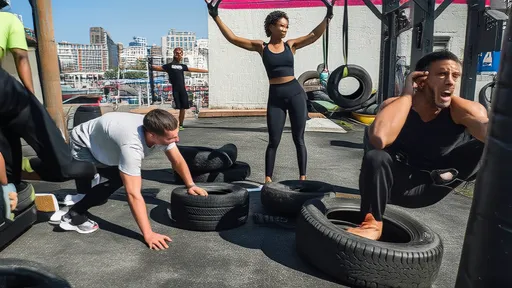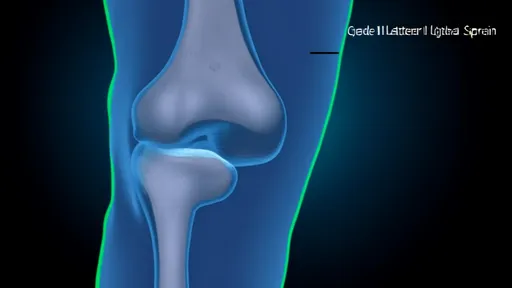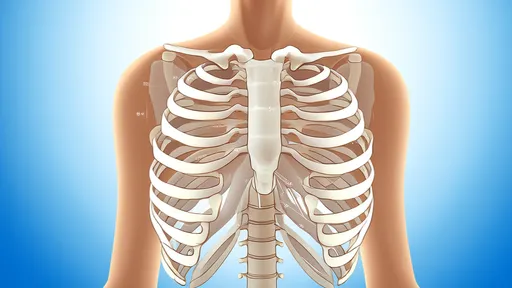For decades, the idea of converting fat into muscle—or vice versa—has been a topic of fascination in fitness and medical communities. While the concept is often oversimplified in popular media, the biological mechanisms behind this transformation are complex and deeply rooted in cellular metabolism. Understanding how the body regulates the interplay between adipose tissue and muscle mass requires delving into the biochemical pathways that govern energy storage and utilization.
Fat and muscle are two distinct types of tissue with fundamentally different roles in the body. Adipose tissue, commonly known as body fat, serves as an energy reservoir, cushioning for organs, and an endocrine organ that secretes hormones like leptin. Muscle tissue, on the other hand, is primarily responsible for movement, posture, and metabolic activity. The notion that one can directly "turn fat into muscle" is a biological misnomer, as these tissues do not interconvert in a straightforward manner. Instead, the process involves the breakdown of fat stores for energy, which can then support muscle growth under the right conditions.
Metabolic Pathways: The Key to Understanding Fat Loss and Muscle Gain
The human body relies on a delicate balance of anabolic (building) and catabolic (breaking down) processes. When the body is in a caloric deficit—burning more energy than it consumes—it taps into fat stores for fuel through lipolysis, the breakdown of triglycerides into free fatty acids and glycerol. These byproducts enter the bloodstream and are oxidized in mitochondria to produce ATP, the energy currency of cells. Simultaneously, resistance training or other forms of exercise create micro-tears in muscle fibers, prompting the body to repair and strengthen them through protein synthesis.
However, muscle growth requires more than just the availability of energy from fat breakdown. Adequate protein intake, hormonal signals (such as insulin-like growth factor and testosterone), and mechanical tension from exercise all play crucial roles. This is why simply losing fat does not automatically result in muscle gain—the two processes, while related, are governed by separate biological mechanisms. The myth of "fat turning into muscle" likely stems from the observable fact that individuals who engage in consistent training and proper nutrition often appear leaner and more muscular over time.
The Role of Stem Cells and Cellular Plasticity
Recent research has explored whether certain progenitor cells, such as mesenchymal stem cells, can differentiate into either fat or muscle cells depending on environmental cues. While this area of study is still in its early stages, it raises intriguing possibilities for regenerative medicine. For instance, some studies suggest that under specific conditions, fat-derived stem cells could be coaxed into contributing to muscle repair, though this is far from a natural or efficient process in the human body.
Another fascinating discovery is the phenomenon of "beige fat," a type of adipose tissue that exhibits characteristics of both white fat (energy storage) and brown fat (energy burning). Some researchers hypothesize that activating beige fat could help regulate metabolism in ways that simultaneously reduce fat accumulation and improve muscle function. However, translating these findings into practical applications for fitness or weight loss remains a significant challenge.
Practical Implications for Fitness and Health
For those seeking to improve body composition—reducing fat while increasing muscle—the most effective approach remains a combination of strength training, cardiovascular exercise, and balanced nutrition. High-intensity interval training (HIIT), for example, has been shown to promote fat oxidation while preserving lean muscle mass. Similarly, diets with sufficient protein and a moderate caloric deficit can help maintain muscle tissue even as fat stores are depleted.
It’s also worth noting that the body’s response to exercise and diet varies widely based on genetics, age, sex, and baseline fitness levels. Two individuals following identical workout routines may experience different rates of fat loss and muscle gain due to these inherent biological differences. This variability underscores the importance of personalized approaches in fitness and nutrition, rather than relying on generalized claims about fat-to-muscle conversion.
Future Directions in Research
As biotechnology advances, scientists are investigating more sophisticated methods of manipulating fat and muscle tissues. Gene therapy, for instance, has shown promise in animal studies for enhancing muscle growth or altering fat metabolism. Pharmacological interventions that target specific pathways—such as myostatin inhibitors to promote muscle development or beta-adrenergic agonists to increase fat burning—are also being explored, though their long-term safety and efficacy in humans remain uncertain.
Another emerging field is the study of extracellular vesicles, tiny particles released by cells that can influence tissue behavior. Some preliminary research suggests that vesicles secreted by muscle during exercise might carry signals that affect fat tissue, potentially opening new avenues for understanding cross-talk between these two systems. While these discoveries are exciting, they are far from providing quick fixes for body recomposition.
The interplay between muscle and fat is a dynamic process shaped by countless biological factors. Rather than viewing them as interchangeable, modern science reveals a nuanced relationship where these tissues communicate and influence each other through intricate metabolic and hormonal pathways. As research progresses, we may uncover more sophisticated ways to optimize body composition, but for now, the fundamentals of exercise and nutrition remain the most reliable tools for transforming one’s physique.
The world of fitness is constantly evolving, with new trends emerging from every corner of the globe. While some workouts stand the test of time, others are so peculiar they make you wonder - who thought this was a good idea? From goat yoga to face slapping workouts, humanity's quest for better health has spawned some truly unconventional practices that blur the line between genius and madness.
The fitness world is buzzing with excitement over the latest viral workout trend—Divine Beats Training 2.0. This high-energy program combines pulsating electronic dance music with scientifically optimized movement patterns, creating what enthusiasts call "the first workout that feels like a nightclub experience." Unlike traditional exercise routines, this system uses precisely timed musical drops and bass-heavy beats to trigger explosive physical responses from participants.
In an era where office workers spend increasingly long hours tethered to their desks, a peculiar fitness trend has emerged from Japan that turns mundane stationery into tools for wellness. The "Stationery Workout" movement, particularly its signature "Ruler Balance" technique, has gained surprising traction among white-collar professionals seeking discreet ways to stay active during marathon work sessions. This unconventional approach transforms everyday office supplies into instruments of physical conditioning, blending productivity with subtle exercise.
In the age of social media dominance, fitness influencers have created countless viral workout trends that promise quick results. However, many of these popular movements can cause serious injuries when performed incorrectly or excessively. Medical professionals and physical therapists are increasingly warning about the dangers lurking behind some deceptively simple-looking challenges.
Fitness gaming has taken the world by storm, and Nintendo's Ring Fit Adventure stands out as one of the most innovative entries in this genre. While many players enjoy the game at face value, there's a hidden layer of depth that few explore—the secret intensity settings. These undisclosed options can transform your workout, pushing you beyond the default limits. For those seeking a more challenging experience, unlocking these hidden features can be a game-changer.
The world of pet entertainment has taken a thrilling turn with the rise of obstacle course designs tailored specifically for feline athletes. Cat owners and enthusiasts are increasingly embracing the concept of creating dynamic, engaging, and challenging courses that cater to their pets' natural instincts. These obstacle courses, often referred to as "cat obstacle course" in certain communities, blend creativity with functionality to provide cats with both physical exercise and mental stimulation.
In today's fast-paced world where stress has become an inevitable part of daily life, people are constantly seeking unconventional yet effective methods to alleviate tension. One such surprising but increasingly popular technique involves the use of ordinary bubble wrap - that ubiquitous packaging material that most of us instinctively pop when it comes our way. What began as an unconscious fidgeting behavior has evolved into structured stress relief training programs harnessing the therapeutic potential of this simple material.
The ancient Chinese literary masterpiece Dream of the Red Chamber is not merely a tale of aristocratic decline—it is also a treasure trove of traditional wellness practices. Among its pages lie subtle references to health-preserving exercises, many of which were practiced by the elite women of the Jia household. Today, these centuries-old movements are being reinterpreted through a modern lens, offering urban dwellers an unexpected bridge between classical literature and contemporary self-care.
The growing popularity of energy drinks has sparked significant interest in their physiological effects, particularly on cardiovascular health. Recent studies utilizing electrocardiogram (ECG) monitoring have begun to unravel the complex relationship between these caffeine-laden beverages and heart function. As millions worldwide consume energy drinks for a quick boost, researchers are investigating whether these products may trigger subtle yet meaningful changes in cardiac rhythm.
Walking is often touted as one of the simplest and most effective forms of exercise, accessible to almost everyone regardless of fitness level. However, as the trend of hitting extreme step counts—such as 30,000 steps a day—gains popularity, concerns about joint wear and tear have emerged. While moderate walking is beneficial, pushing the body to such extremes may come at a cost, particularly for the knees, hips, and ankles. This raises an important question: how much is too much when it comes to daily steps?
The crisp morning air, the quiet streets, and the promise of a fresh start make dawn an irresistible time for runners. Yet beneath the serenity of sunrise jogs lies a hidden danger few anticipate – exercise-induced syncope, particularly when running in a fasted state. This phenomenon isn’t merely about "feeling lightheaded"; it’s a temporary loss of consciousness that can lead to catastrophic falls or accidents. As more people adopt fasting routines or squeeze workouts before breakfast, understanding why this happens and how to respond could mean the difference between a close call and a tragedy.
Ligamentous laxity caused by overstretching is a complex clinical condition that often requires advanced imaging for accurate diagnosis. Magnetic resonance imaging (MRI) has emerged as the gold standard for evaluating ligament integrity, providing unparalleled soft tissue contrast that allows clinicians to assess the degree of ligament injury and subsequent laxity. This imaging modality reveals not only the macroscopic tears but also subtle microstructural changes that occur when ligaments are stretched beyond their physiological limits.
For decades, the idea of converting fat into muscle—or vice versa—has been a topic of fascination in fitness and medical communities. While the concept is often oversimplified in popular media, the biological mechanisms behind this transformation are complex and deeply rooted in cellular metabolism. Understanding how the body regulates the interplay between adipose tissue and muscle mass requires delving into the biochemical pathways that govern energy storage and utilization.
The medical community has long grappled with the complexities of localized cryogenic burns, a unique injury pattern that occurs when skin and underlying tissues are exposed to extreme cold. Unlike thermal burns which follow more predictable pathways, cryogenic injuries present distinct clinical challenges due to their delayed presentation and progressive tissue damage. Recent multicenter studies have shed new light on the pathophysiology and optimal treatment approaches for these frostbite-like injuries caused by industrial accidents, medical cryotherapy mishaps, and improper handling of liquefied gases.
The medical community has long been fascinated by the intricate relationship between skeletal deformities and their underlying causes. Among these, costal arch deformities, particularly those involving the lower ribs, present a unique challenge for both diagnosis and treatment. Often referred to as "corset rib syndrome" or "lower rib cage deformity," this condition manifests as an abnormal inward curvature of the lower ribs, frequently accompanied by chronic pain and respiratory limitations. The condition's nomenclature stems from its historical association with tight-lacing corsets, though modern cases often arise from congenital factors or trauma.














